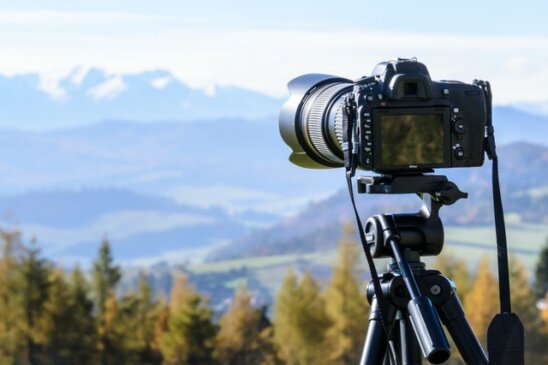“Action photography” as the name denotes is a genre for photographers’ keen to shoot moving subjects. It is incredibly challenging and exciting as you only have a split- second to capture the perfect shot. If you are passionate about photography and would like to give a shot at shooting subjects in motion, here are some beginner tips from the pros to help you start out.
1. Choose the correct mode for auto-focusing
- The AF-S or the single shot focus is the perfect setting for you to choose in most modern-day cameras especially when you desire to “freeze” the action especially for subjects with a tight composition.
- For shooting sequences, one should use the continuous AF or the AF-C feature in the camera particularly in cases where the moving subject’s actions are slow.
- When it comes to sophisticated and expensive cameras, you will find a setting that tracks movements, however, most cameras cannot continuously autofocus when in the high-speed burst mode. Several of them will default to the AF-C mode in their reduced speed continuous shooting modes or even default to the low-speed continuous shooting when you choose the AF-C mode.
- The predictive auto-focusing mode deploys the microprocessor of your camera to evaluate adjustments in focusing and it predicts the subject’s location when you press the shutter.
- In DSLR cameras, there is a setting that allows split-second delays caused by the shutter opening and mirror rising. If you use a CSC camera, with no mirror, the shutter opening must be permitted so the delay is less and the focus is marginally quicker.
2. Use the manual focus only when needed
- In places with poor lights and reduced contrast, the AF system in cameras tends to become slow as the elements of focus located in the lens rack go back and forth to find the edge. This is known as “hunting”.
- You will often find this feature in affordable and entry -level cameras irrespective of whether they deploy lenses that are permanent or interchangeable in nature.
- Using the technique known as “zone- focusing” to overcome this issue. This process involves the manual pre-focus on the location of the action. You can take for example, the batsman who is standing at the front of the cricket stumps or the player serving in a game of tennis.
- Deploying this strategy reduces the chance for “hunting”. When the subject comes into the focused area, you just need to time the shot for recording it.
Cryptocurrency – What lies in the future?
3. Make use of the AF point area selection
- A majority of modern-day cameras offer you at least three area modes for autofocus. They are multiple, area selection and single-point. When you shoot with the continuous AF settings, especially in conditions that are bright and have low contrast, choosing the multiple AF helps the camera to select its own point for focusing before it locks on the subject.
- The area AF selection works quite well in dim lights and conditions that have a low contrast particularly if the camera permits you to shift the area you choose around the frame without removing your eye from the viewfinder.
- The cameras that have electronic viewfinders show you the location of the AF points whereas those cameras with optical viewfinders give you a red dot to choose the chosen point for focusing.
- When you select a small area, you can accelerate the focusing by positioning your sensors on the area that you want sharp renders. If you want to use the manual focusing feature, you should choose a single AF point or a small cluster of points to focus on the specific subjects.
- You should deploy focusing aids that the camera offers you like a magnification of the chosen area and focus on outlining the sharp areas in the scene with a color that contrasts for highlighting the sharpness of the subject.
4. Maximize the field depth
- Action photography comes out the best when a single subject against a blurred background appears sharp. However, the shots that show groups of team players in a sports area, flock of birds or even a herd of animals benefit from using a wide depth field.
- With most camera lenses, the sharpest resolution you get is a stop or two down from your maximum aperture. This means if the maximum aperture is f /4 and you need a shallow field depth, choosing an aperture between say, f/4.5 and f/5.6. This technique offers you the optimal balance between the blurred background and the sharp rendition of your subject.
- You should use the maximum aperture when there is a “busy” background as the difference between the maximum aperture and one or two stops down will go unnoticed.
- Do not use aperture settings that are very small, lower than f/11. If you are looking for resolution in your shorts, avoid the smallest settings for aperture.
5. Right shutter speed to get the effect you need
- In order to freeze the action, you need a shutter speed that is at least 1/500 a second. There are some sports that use balls and rapid movements of the body. They need 1/1000 a second to make the object look as sharp as a pin.
- Use the opposite technique when you wish to record the motion of the object to make it look like a blur. You can use this technique for capturing sharply focused objects against blurred backgrounds.
- There are several sports action photography professionals that use shutter speeds slower than 1/30 second for panning so that they can get a background that is well-blurred.
- Use a tripod mount when you want to shoot and record motion like star trails and moving water. An exposure more than 30 seconds are needed in most of these situations. However, in the case of star trails, you need 30 minutes or so to ensure these trails are long enough to be noticed.
Therefore, with these 5 beginner tips, start shooting action photography today. Note, practice makes you perfect. Try to compare old shots with new ones to assess improvements. In no time, you will become a pro at it too!












